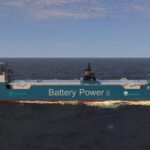Energy News Beat
Electric reliability has been a hot topic lately — from congressional hearings to regulatory agencies and at the regional transmission organizations that run the electric grid in much of the country.
The American electric grid is undergoing a major change, prodded by state and federal decarbonization policies, market forces pushing cheaper and cleaner forms of electricity and aging power infrastructure.
That’s run up against electric transmission constraints, big delays in getting new wires built and massive backlogs in getting new, mostly renewable projects connected to the grid. Grid operators, in particular, are worried about the pace of the change, arguing fossil plant retirements are accelerating too quickly to ensure there are enough new resources to replace them.
Into that tumult the U.S. Environmental Protection Agency earlier this year dropped a proposal to again attempt to regulate carbon from power plants, which are responsible for about a quarter of all U.S. greenhouse gas emissions.
Since they were rolled out in May, the proposed rules have been a lightning rod for congressional Republicans and drawn fire from competitive electric generators as well as concern from federal and state energy regulators and grid operators that the regulations go too far, too fast.
But the EPA and clean energy proponents say the time frames are workable and crucial to cutting carbon emissions while allowing time for compliance and the flexibility needed to keep the lights on during the transition.
What is the EPA proposing?
EPA’s draft rule creates different emissions targets for gas and coal plants depending on their planned retirement date and capacity factors, a measure of how much power a plant produces over time relative to how much it could have produced at full operation.
“We have committed ourselves to designing and implementing regulations to serve the public’s dual needs of healthful air quality and reliable and affordable electricity,” said Joseph Goffman, a principal deputy administrator at EPA, at a Nov. 9 FERC technical conference on electric reliability. “These emissions are helping fuel an escalating climate crisis that is already having devastating impacts on Americans across the country.”
The general approach, according to Carrie Jenks, executive director of Harvard Law School’s environmental and energy law program, is to require coal and gas units that don’t plan to retire in the near term and are operating at higher capacity factors to undertake more rigorous carbon reductions.
“If you’re operating a lot, and a lot throughout the year and really frequently, then you have to do more to reduce your emissions from those plants. But if you’re operating either as a peaker or intermediate, meaning not all the time, then there’s different options that are available for those plants,” Jenks said at a media briefing organized by Energy Innovation, a non-partisan energy and climate policy think tank.
For example, for a coal plant that intends to operate beyond 2040, EPA is proposing that the facility will need to capture 90% of its carbon emissions by 2030.
For a plant that will retire by 2040, its emissions rate is based on co-firing with natural gas at a rate of 40%. A coal unit that plans to retire by 2035 could agree to operate at 20% capacity and not be bound by any new carbon restrictions, Jenks said. If it’s retiring before 2032, it can operate as is.
“2030 is really the decision point for units for how they plan to operate going forward,” Jenks said, noting the exact thresholds and parameters could change in response to comments EPA receives. There are similar requirements for gas plants (though they differ slightly for new and existing plants) to either blend with hydrogen to reduce emissions or capture emissions depending on whether they are baseload (above 50% capacity factor) or so-called “peaker plants,” which fire on during periods of high demand.
However, EPA’s reliance on carbon capture and storage as well as hydrogen blending have drawn lots of criticism, mainly because both sets of technologies are relatively in their infancy and have yet to be deployed at any kind of scale.
Anthony Campbell, president and CEO at East Kentucky Power Cooperative, speaking on behalf of the National Rural Electric Cooperative Association, said EPA’s rule “is unlawful and unworkable” at the FERC technical conference. Campbell said that under the proposed rule, plans are due to EPA by 2026, making it impossible for plant operators to make compliance decisions given the uncertainty surrounding carbon capture and hydrogen production.
“They will be forced into either retirement of essential, dispatchable coal units or curtailment of those units to capacity factors below 20% by 2032 and complete retirement by 2035,” Campbell said. “The disorderly retirement and elimination of baseload generation will leave the electricity grid with a significant deficit of dispatchable generation that cannot be replaced by intermittent resources, especially during a time of economic growth.”
‘The arithmetic doesn’t work’
Electric reliability debates can get complex. But FERC Commissioner Mark Christie, a former Virginia utility regulator, said at the Nov. 9 technical conference on reliability that the fundamental problem facing the U.S. electric grid is as simple as two lines on a chart. One is the demand for power.
“That line’s going up,” Christie said. “It may go up astronomically if ‘electrify everything’ takes place — you electrify the transportation sector, you electrify the home heating sector.”
The other line is supply of power.
“And that line ain’t going up, or it’s certainly not going up nearly as rapidly,” he said. “The arithmetic doesn’t work. And that’s the fundamental issue.”
According to the Clean Energy States Alliance, a coalition of state energy agencies, 23 states, plus the District of Columbia and Puerto Rico, have 100% clean energy goals. Along with federal policy like the landmark Inflation Reduction Act, and market conditions, utilities, many of which have their own decarbonization goals, are being prodded into retiring older coal and gas plants.
(At a recent FERC meeting, Christie warned that two of the nation’s largest regional transmission operators, MISO and PJM, are “basically hemorrhaging dispatchable resources.”)
PJM, which coordinates the flow of electricity from power generators to utility companies in 13 states and the District of Columbia, is facing complaints about how it ensures it will have enough capacity to keep the electricity flowing during a winter storm or summer heat wave. (Photo by fhm/Getty Images)
Jim Robb, president and CEO of the North American Electric Reliability Corporation — which, for the first time, has started listing “energy policy” as a reliability risk — told the commissioners at the reliability conference that the expansion of so-called inverter-based resources like wind, solar and batteries introduce new variability into grid management, especially as they become bigger parts of the power mix.
“This is a country that hasn’t proven its ability to develop infrastructure to support that,” Robb said. “We’re going to need to figure out how to get transmission built, we’re going to have to figure out how to speed the development of new resources onto the grid and importantly we need to figure out how to retain the stuff that we have to meet any of these policy objectives.”
Goffman, the EPA official, said the agency is committed to continuing engagement with regulators and grid operators “over the coming weeks and months so that we can ensure we arrive at a final rule for reducing greenhouse gas emissions from power plants that is effective, workable, and fully compatible with maintaining reliable and affordable electricity.”
‘The grid can absolutely be reliable’
Ric O’Connell, executive director of GridLab, which he called a public interest organization that provides technical expertise on the electric grid to policy makers, told the FERC conference that the EPA rules and ensuring reliability are compatible.
“The grid can absolutely be reliable under the proposed EPA rules but we’ll need to plan and take action,” he said, adding that the rules codify “what’s already happening due to economic and policy forces.” He noted that 2 terawatts (2 million megawatts) of power resources, mostly wind, solar and battery resources, are stuck in interconnection queues across the country.
In a media briefing hosted by Energy Innovation, O’Connell said there’s “an enormous wealth of academic and industry literature” that shows the path to cutting carbon from the power sector drastically over the next decade.
“We do that through a very simple playbook. It’s deploy wind, solar and batteries over the next decade,” he said. Couple that with keeping carbon-free sources like hydropower and nuclear plants online and use existing gas fleets at low levels to provide the crucial balancing services large amounts of renewables will require, O’Connell added.
He noted that the United Kingdom has gone from 71% coal power in 1990 to less than 1% this year and that California and New England’s electric grids are already largely coal free. Even Texas, he noted, “is well on its way to looking like this as well.” He noted that MISO’s projections envision a similar grid, with natural gas plants running at very low capacity factors by 2040.
“Can we run our grid without coal? The simple answer is yes,” he said.
ENB Top News
ENB
Energy Dashboard
ENB Podcast
ENB Substack
The post Reliability v. sustainability: Inside the debate over the EPA’s proposed carbon rules appeared first on Energy News Beat.








